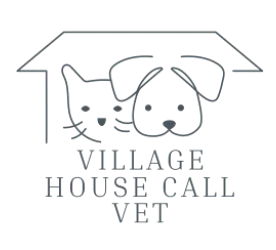Feline Chronic Kidney Disease
Chronic Kidney Disease (or “CKD” for short) is one of the most common chronic health conditions in cats and refers to the gradual loss of kidney function, ultimately resulting in organ failure and death. Many cats slowly lose kidney function over time, and eventually begin to feel ill as a result. This change can progress slowly over many years or rapidly, and may be accelerated by infections, blood pressure problems, inflammation, and genetic conditions.
Luckily, cats have two kidneys, but only need one functioning kidney to be healthy. This means they can lose 50% of their kidney function before a change is even apparent on labwork. The down side to this redundancy is that we can’t detect problems until significant disease is present. Obvious lab changes usually develop around 66% loss of function, and pets begin to exhibit signs of illness around 75% loss.
Signs of Disease
Cats in early stages of CKD will show no signs, or only very mild signs (most commonly increased thirst and urination, though the change may be mild). Once disease progresses further, signs may include: poor or fluctuating appetite, excessive drinking and urination, dilute urine, nausea and vomiting, urinary accidents, malaise, muscle wasting, and potentially death.
Diagnosis
Cats are diagnosed in two stages: First, lab work shows repeatedly elevated kidney values AND dilute urine. Second, we rule out other illness that may cause similar lab work changes without impairing baseline kidney function. We screen for early signs of disease on annual blood work, and whenever we run general lab tests for sick pets. Urine tests are also critical to diagnosis, including urine analysis, urine culture, and urine protein testing. For cats with confirmed kidney disease, blood pressure measurement and abdominal ultrasounds (sonograms) can help rule out contributing health concerns.
Treatment
Unfortunately, we cannot stop CKD from progressing. We can slow it’s progression by treating and preventing accelerating factors such as kidney infections and hypertension (high blood pressure). To this end, we monitor CKD patients frequently (every 3 to 6 months), checking blood, urine, and blood pressure measurements on a rotating basis.
We can make patients feel better by addressing the nutritional and hydration aspects of this disease. When kidney function is disrupted, cats are unable to retain and eliminate specific nutrients appropriately. By limiting their intake of some (phosphorous and protein most notably) and supplementing others (potassium and water, among others), we can help mitigate the effects. Each cat’s need for these changes will vary, and will change over time. As a part of monitoring labwork, we check each of these values and adjust our management plan accordingly. There are many prescription diets, supplements, chemical binders, and hydration aides available, and we can help determine which will be of most benefit to your cat.
Prognosis
Each cat’s journey through CKD is different. Many cats live for several years after diagnosis, especially if we catch changes early, and adjust our monitoring and dietary plan accordingly. We classify CKD into four different stages based on blood values, and patients in Stages 1 and 2 have excellent prognosis.
Patients with more advanced disease, in Stage 3, need more intensive management to maintain their quality of life, and patients in Stage 4 have progressed to the point where hospice care is appropriate.
Prevention
There is no way to prevent a slow deterioration in kidney function in some cats, but prompt treatment of other conditions affecting the kidneys will prevent unnecessary damage to these organs. All cats age 8 and under should receive annual exams and annual bloodwork to screen for early changes. Cats over 8 years old should have semiannual exams and labwork, including blood and urine samples, for screening.



